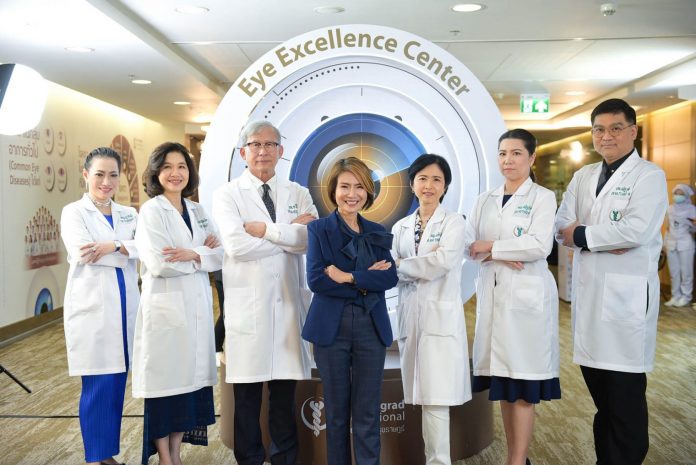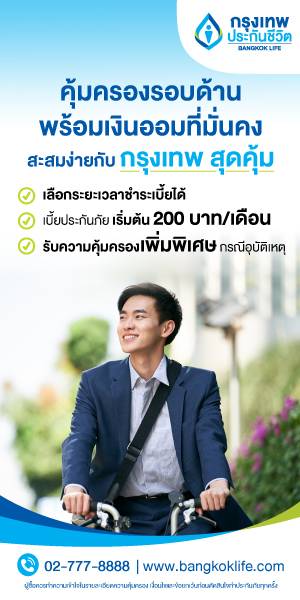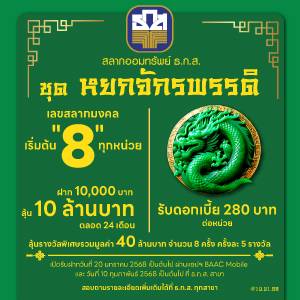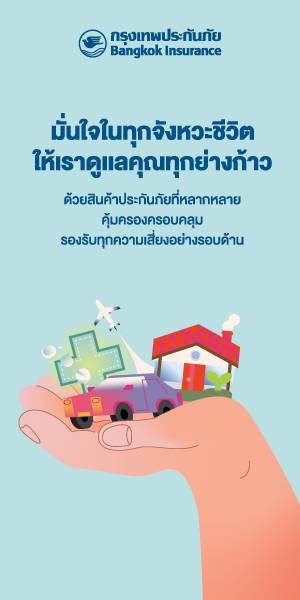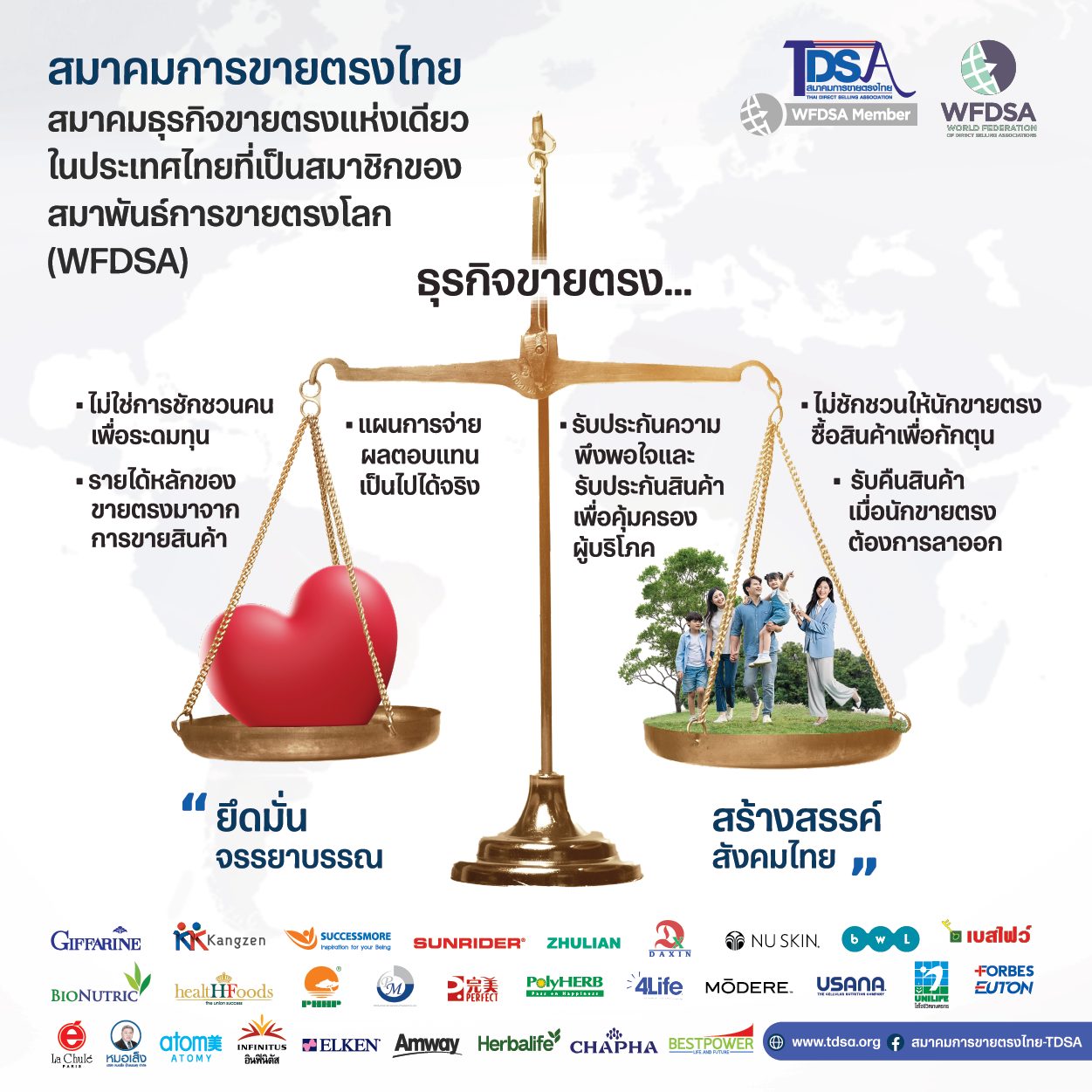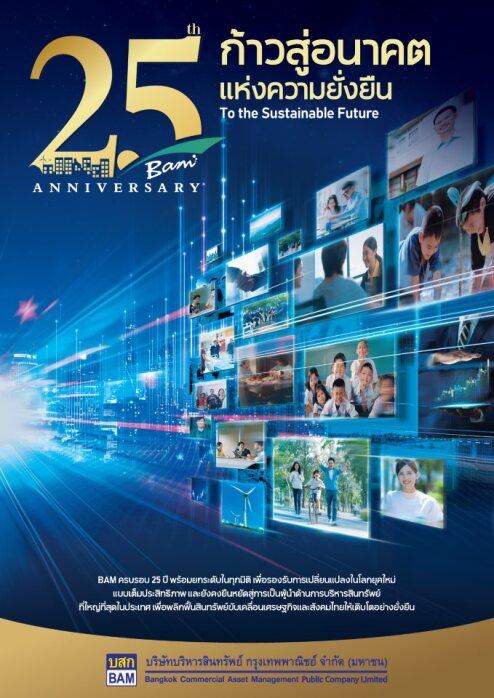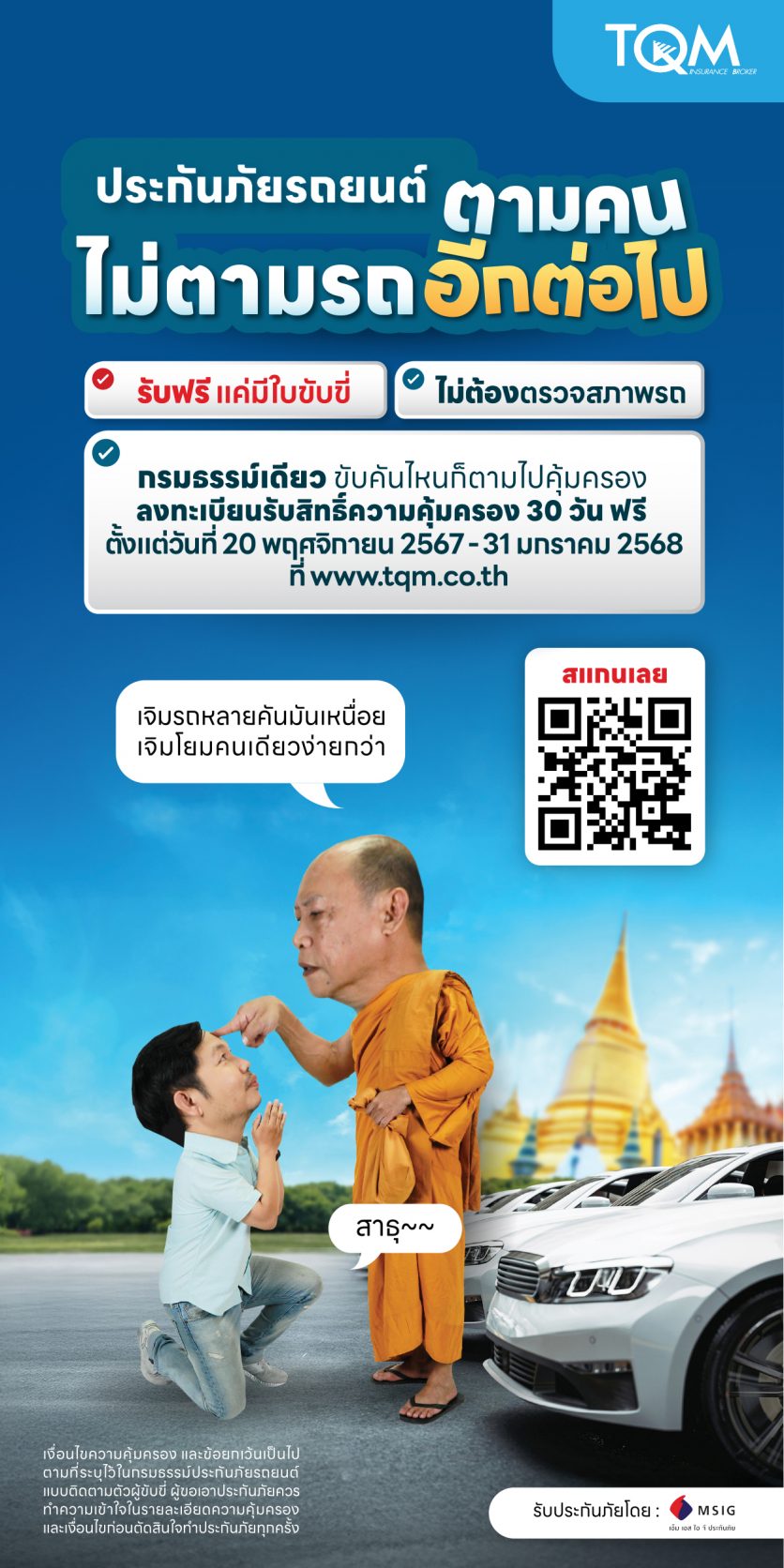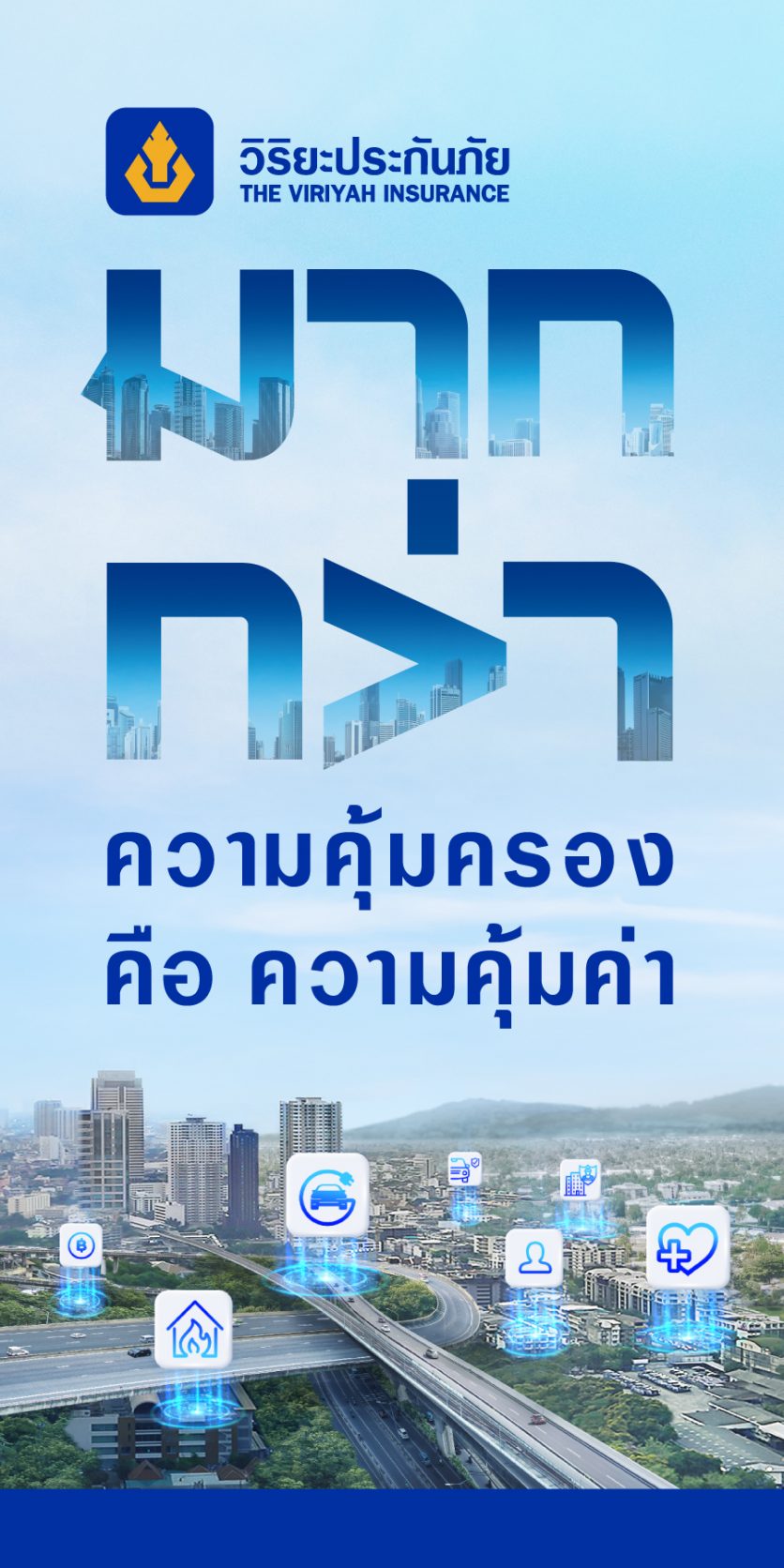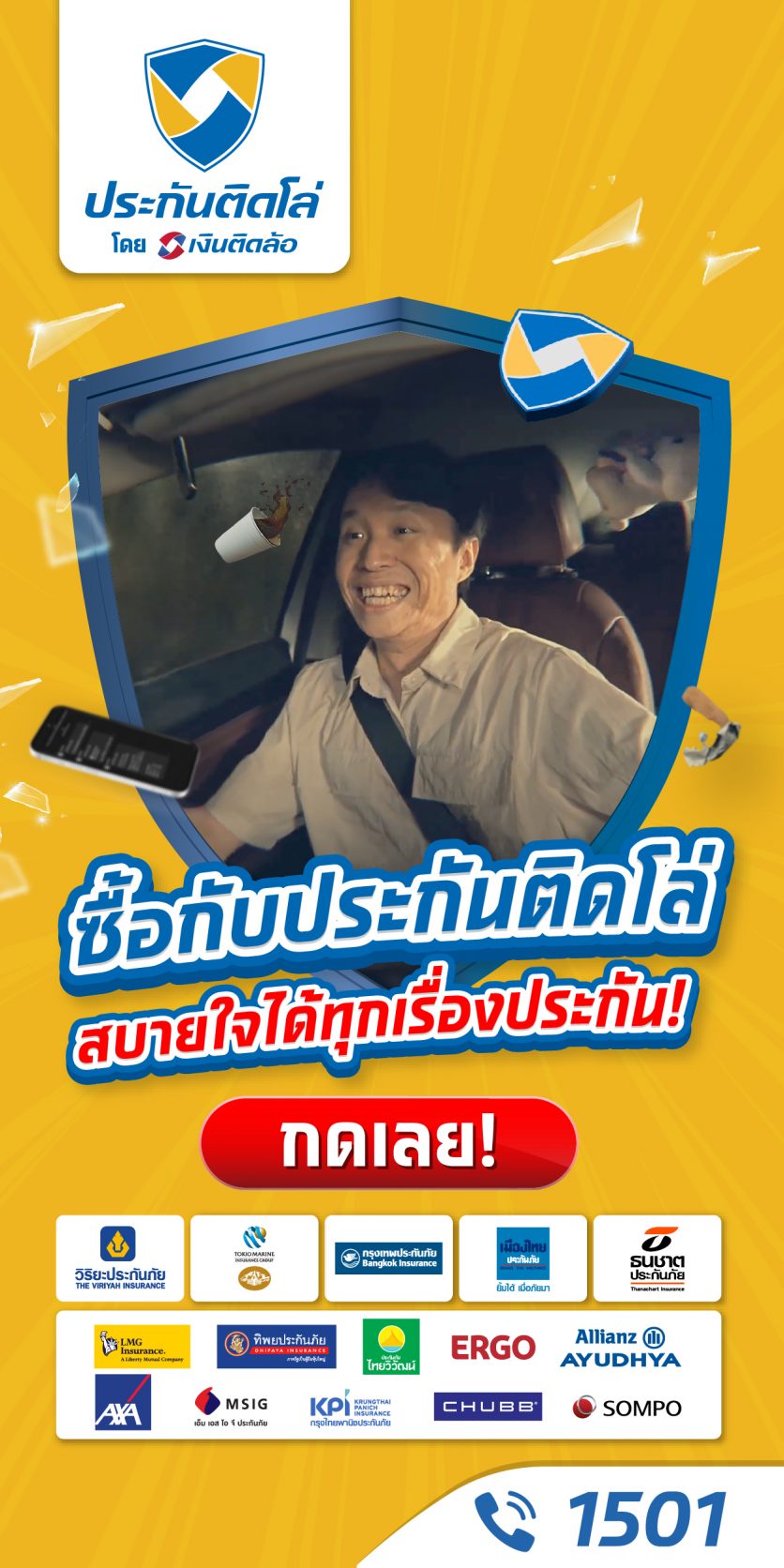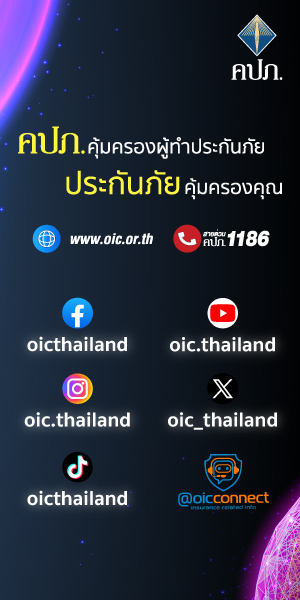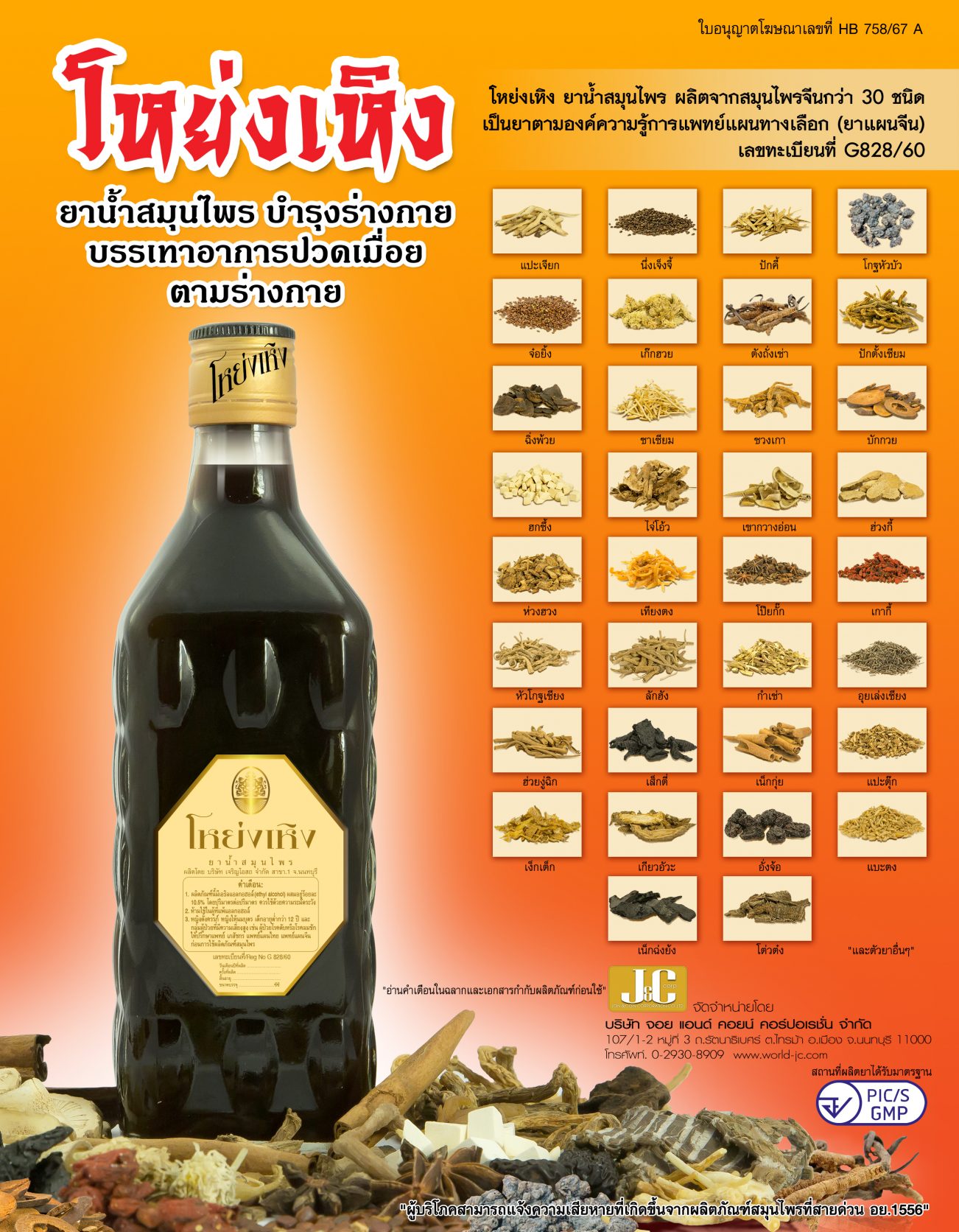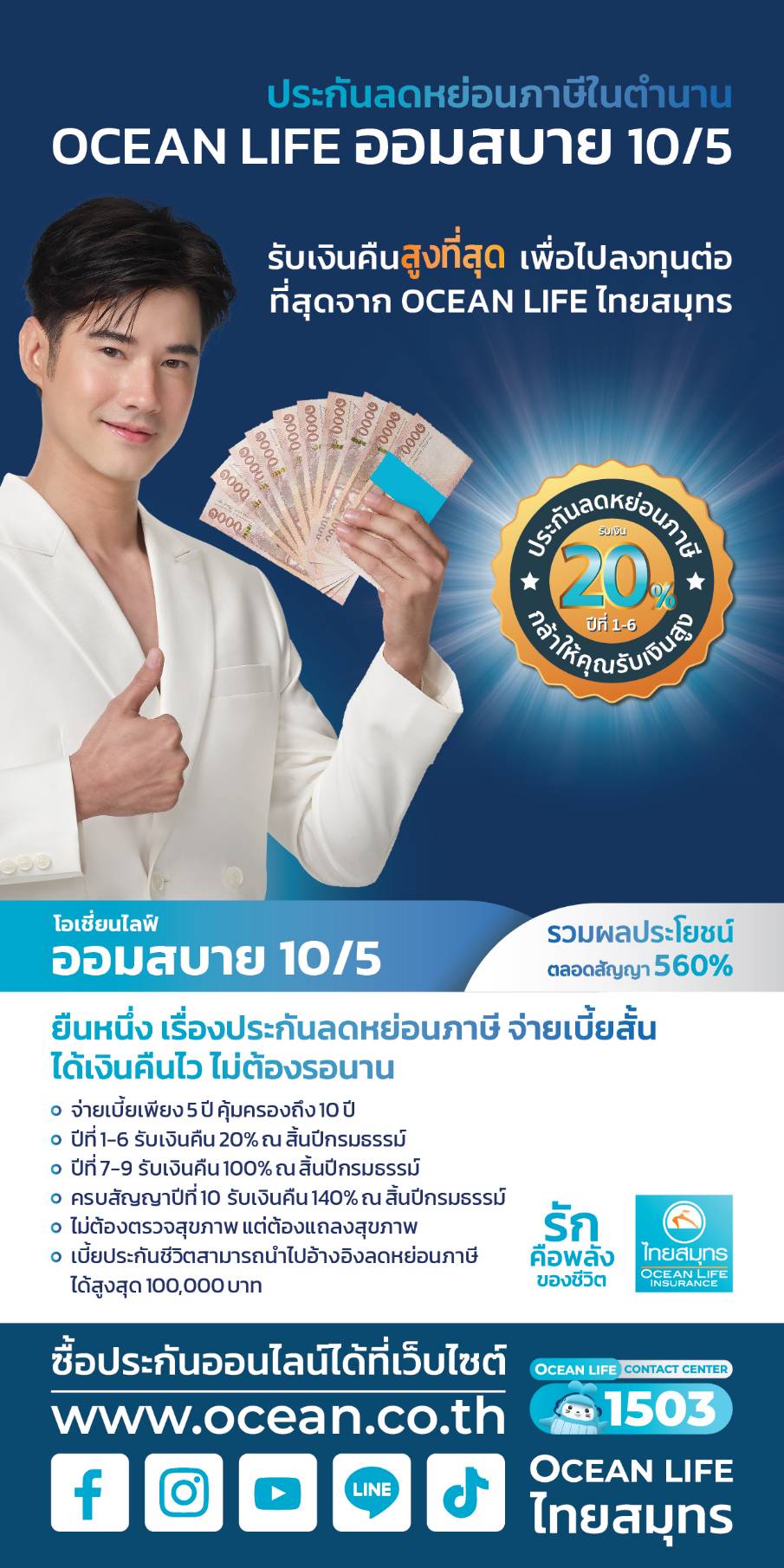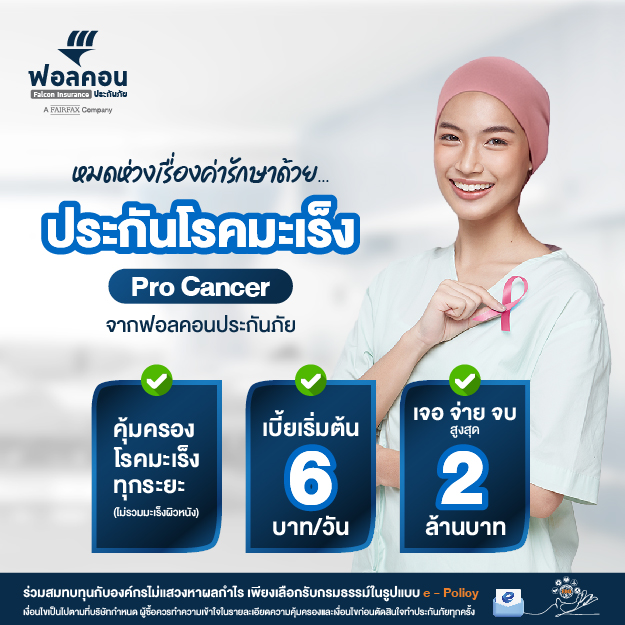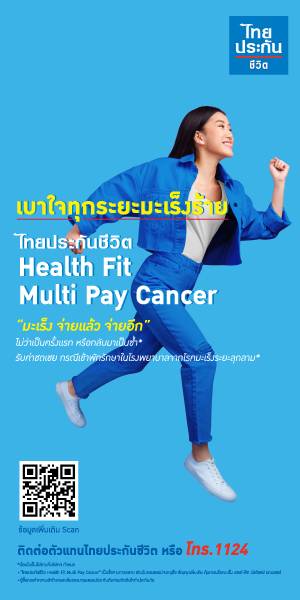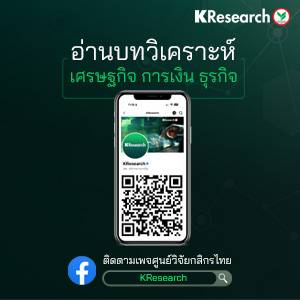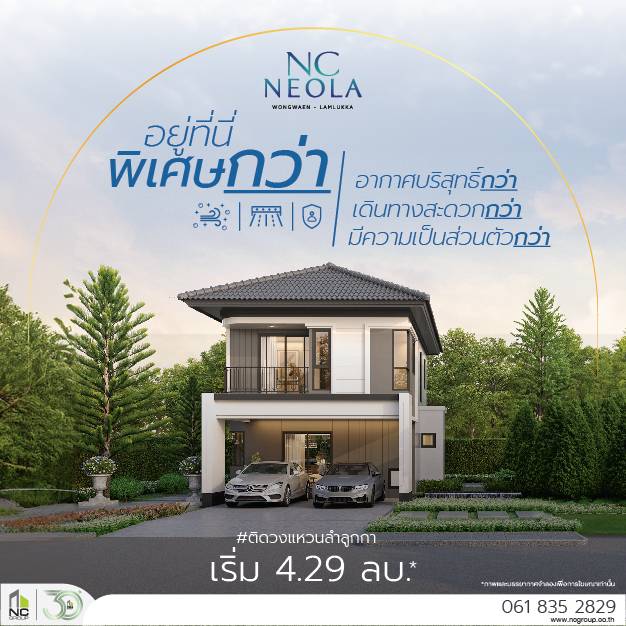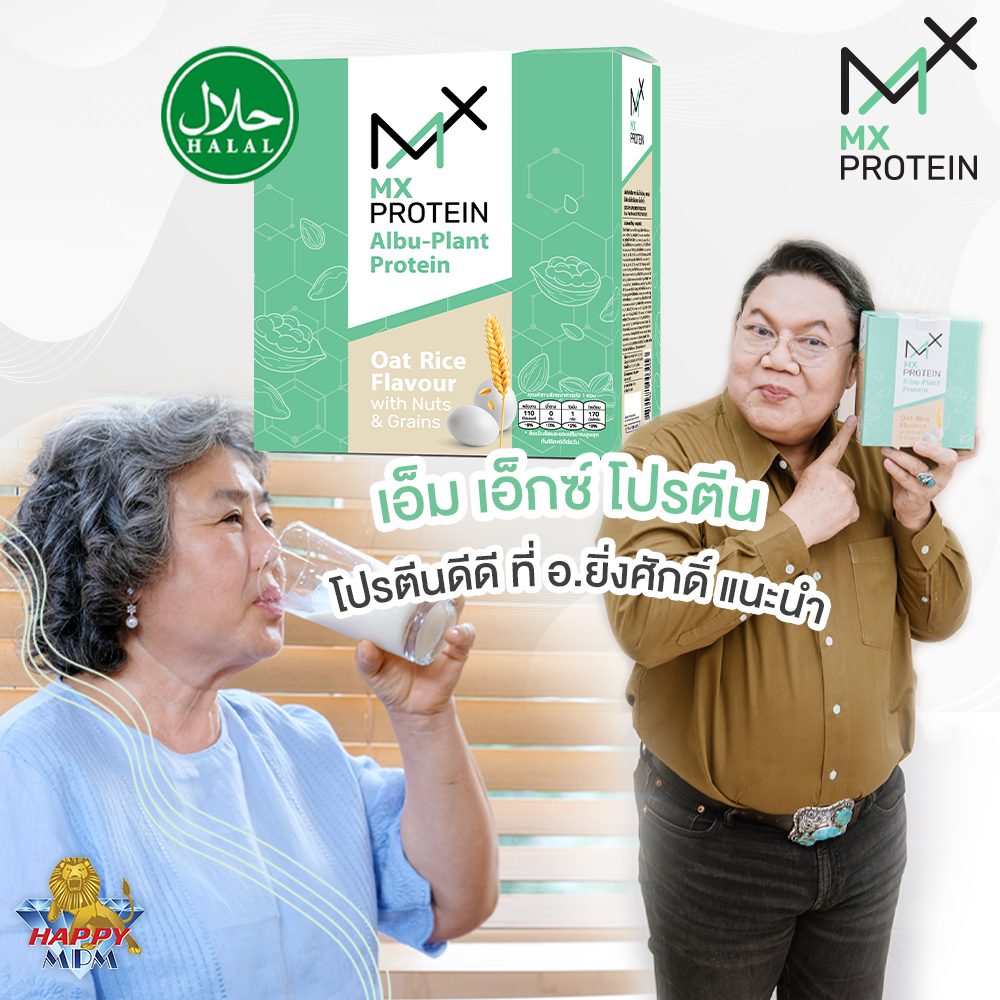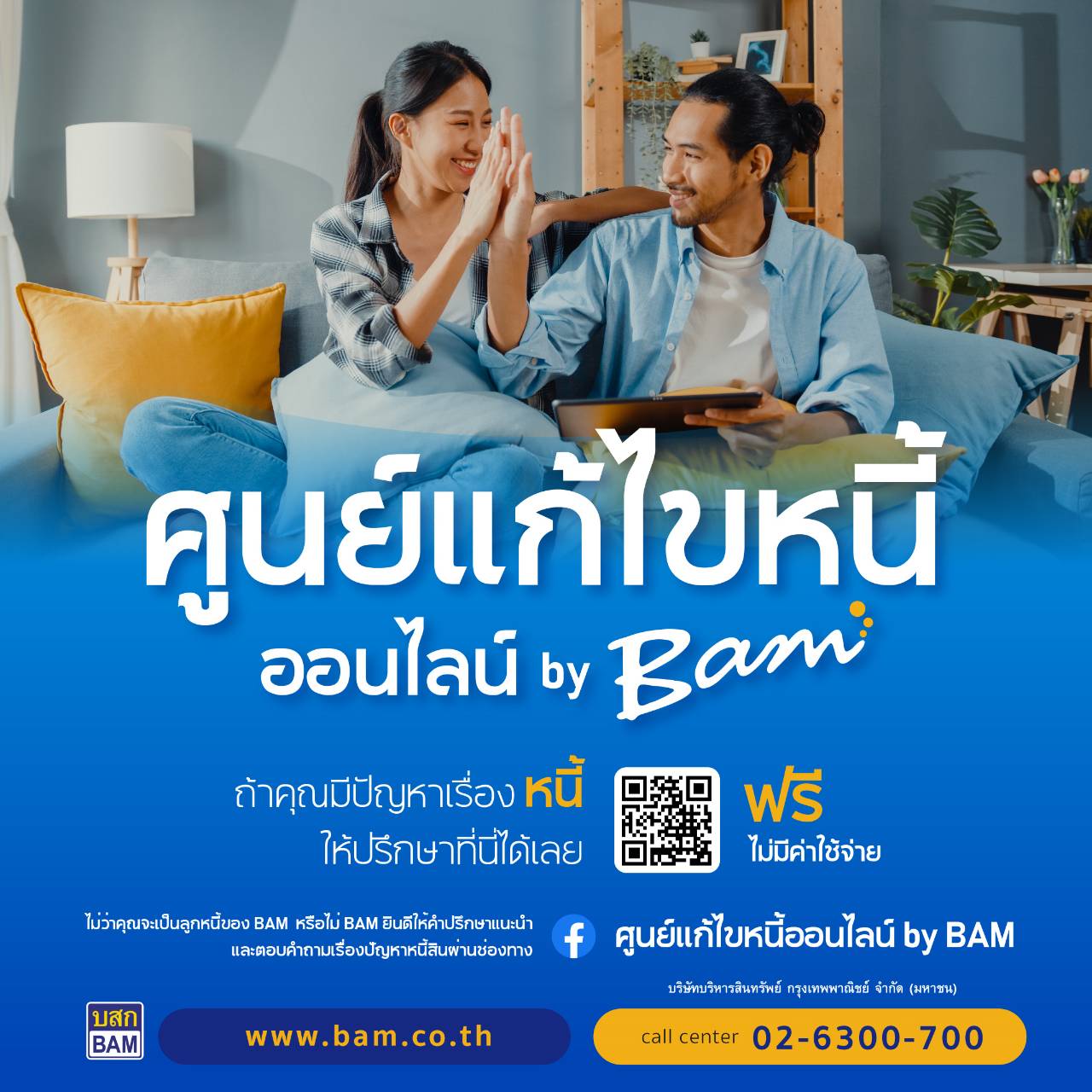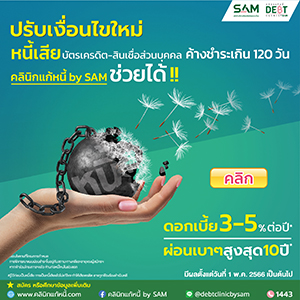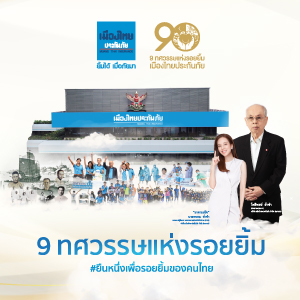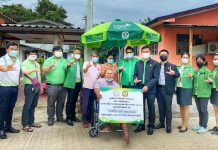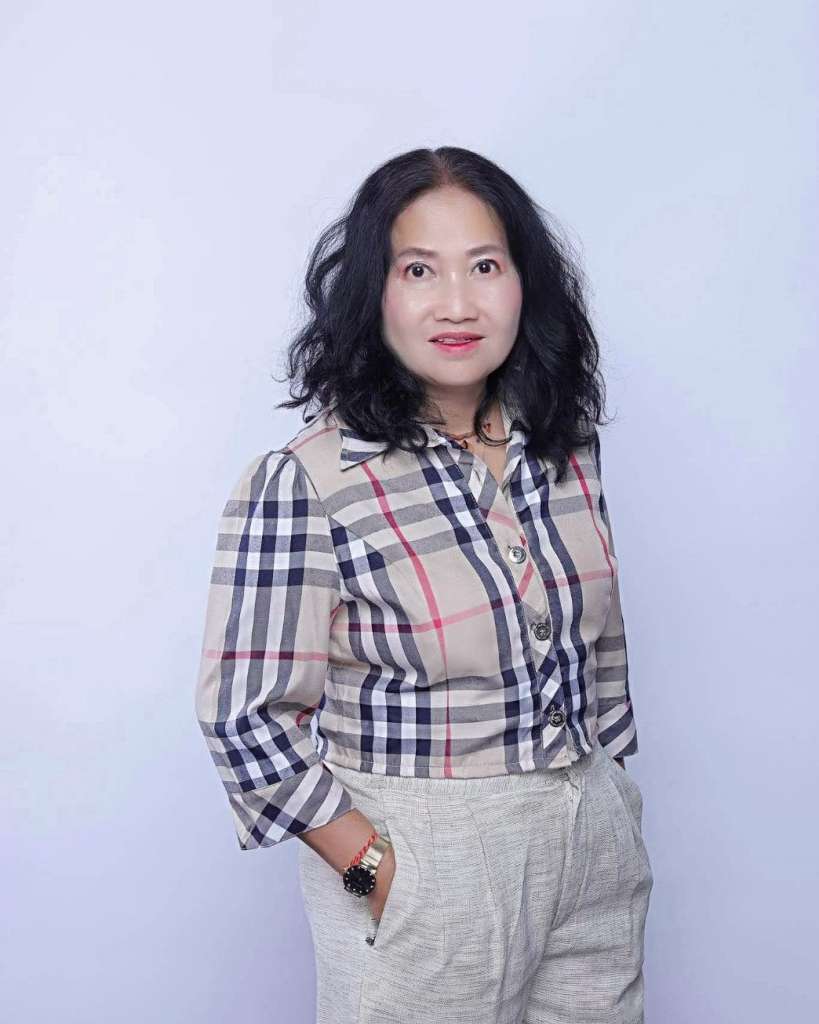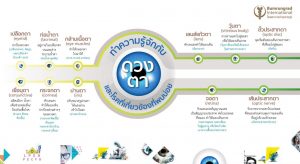
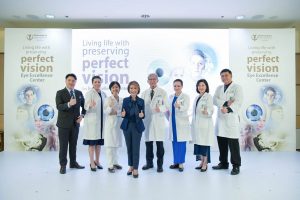
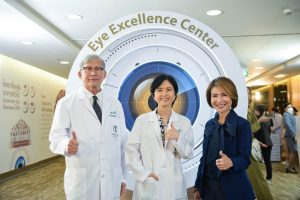
‘ดวงตา’ เป็นอวัยวะที่มีความซับซ้อนที่ควรใส่ใจดูแล เพราะบางครั้งอาจตรวจพบโรคอื่นซ่อนอยู่ การที่โรงพยาบาลมีจักษุแพทย์ชำนาญการในแต่ละด้าน (Sub-specialties) รวมถึงแพทย์เฉพาะทางครบทุกสาขาในสถานที่ให้บริการเดียวกันได้อย่างครบวงจร และสามารถทำงานร่วมกันได้อย่างไร้รอยต่อ พร้อมมีเทคโนโลยีที่ทันสมัย จะเพิ่มโอกาสให้ผู้ป่วยได้รับการรักษาที่มีประสิทธิภาพและความปลอดภัยมากยิ่งขึ้น
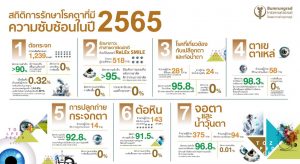 องค์การอนามัยโลก (WHO) รายงานว่าทั่วโลกพบประชากร 2.2 พันล้านคนที่มีความบกพร่องทางการมองเห็น ซึ่งในจำนวนนี้กว่า 50% เป็นปัญหาที่สามารถป้องกันได้หรือยังไม่ได้รับการแก้ไข ขณะที่ในปี 2563 มีประชากร 1.1 พันล้านคนสูญเสียการมองเห็น โดยคาดการณ์ว่าในอีก 30 ปีข้างหน้า จะมีผู้ที่สูญเสียการมองเห็นเพิ่มขึ้นอีก 600 ล้านคน เป็น 1.7 พันล้านคน
องค์การอนามัยโลก (WHO) รายงานว่าทั่วโลกพบประชากร 2.2 พันล้านคนที่มีความบกพร่องทางการมองเห็น ซึ่งในจำนวนนี้กว่า 50% เป็นปัญหาที่สามารถป้องกันได้หรือยังไม่ได้รับการแก้ไข ขณะที่ในปี 2563 มีประชากร 1.1 พันล้านคนสูญเสียการมองเห็น โดยคาดการณ์ว่าในอีก 30 ปีข้างหน้า จะมีผู้ที่สูญเสียการมองเห็นเพิ่มขึ้นอีก 600 ล้านคน เป็น 1.7 พันล้านคน

ภญ. อาทิรัตน์ จารุกิจพิพัฒน์ ประธานเจ้าหน้าที่บริหาร โรงพยาบาลบำรุงราษฎร์ เปิดเผยว่า ปัญหาเกี่ยวกับ ‘ดวงตา’ เป็นเรื่องใกล้ตัวซึ่งมีผลต่อการใช้ชีวิตประจำวัน สามารถเกิดขึ้นได้กับทุกเพศทุกวัย โรงพยาบาลบำรุงราษฎร์ได้ตระหนักถึงปัญหาเกี่ยวกับสุขภาพตาดังกล่าว จึงได้จัดงานแถลงข่าว Eye Excellence Center ขึ้นเพื่อสร้างความตระหนักรู้เกี่ยวกับการดูแลสุขภาพดวงตาและการป้องกันก่อนเกิดโรค เพราะดวงตาเป็นอวัยวะที่สำคัญและซับซ้อน จึงจำเป็นต้องมีผู้เชี่ยวชาญเฉพาะทางให้การดูแลเพื่อรักษาไว้ซึ่งการมองเห็นที่ดีตามช่วงวัยที่เหมาะสม
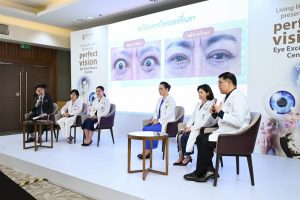
โดยศูนย์จักษุ โรงพยาบาลบำรุงราษฎร์ มีความพร้อมในการดูแลรักษาทุกโรคเกี่ยวกับดวงตาในทุกช่วงวัย ครอบคลุมตั้งแต่กลุ่มอาการทั่วไปจนถึงกลุ่มอาการที่มีความซับซ้อน รวมถึงผู้ที่ประสบอุบัติเหตุฉุกเฉินและกระทบต่อใบหน้าหรือดวงตาอย่างรุนแรง โดยมีจักษุแพทย์ผู้ชำนาญการในแต่ละด้าน (Sub-specialties) เช่น จักษุแพทย์เฉพาะทางโรคกระจกตา โรคของจอตา โรคของกล้ามเนื้อตา เนื้อเยื่อรอบดวงตาและเบ้าตา และในกรณีที่มีความซับซ้อนของโรคอื่นร่วมด้วย จักษุแพทย์จะให้การรักษาร่วมกันกับทีมแพทย์ผู้ชำนาญการเฉพาะทางศูนย์อื่นๆ เช่น แพทย์ผู้ชำนาญการด้านอายุรศาสตร์โรคต่อมไร้ท่อและเมตะบอลิสม, แพทย์ผู้ชำนาญการด้านประสาทวิทยา ทีมเภสัชกรและทีมสหสาขาวิชาชีพ ด้วยเครื่องมือที่ทันสมัยสำหรับการตรวจวินิจฉัยและรักษาได้อย่างรวดเร็วและแม่นยำ ซึ่งทั้งหมดเป็นปัจจัยสำคัญที่ทำให้ผลลัพธ์การรักษามีความปลอดภัยและมีประสิทธิภาพดียิ่งขึ้น
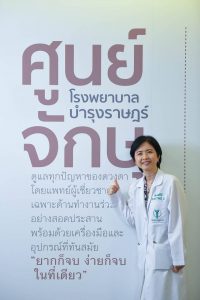
พญ. เมทินี ศิริมหาราช หัวหน้าศูนย์จักษุและจักษุแพทย์เฉพาะทางโรคจอตาและน้ำวุ้นตา โรงพยาบาลบำรุงราษฎร์ กล่าวว่า การที่คนเราจะมองเห็นได้อย่างชัดเจนนั้น ทุกองค์ประกอบของดวงตามีความสำคัญ โดยเฉพาะ ‘จอตา หรือเรตินา’ ถือเป็นส่วนประกอบที่สำคัญที่สุดของดวงตา เพราะเป็นตัวกำหนดประสิทธิภาพในการมองเห็น ในภาวะที่จอตาปกติ แสงที่ผ่านเข้ามาแล้วหักเหผ่านกระจกตาและเลนส์ตาจะตกกระทบที่จอตาพอดี ทำให้ภาพที่มองเห็นมีความคมชัด ในทางกลับกัน หากป่วยเป็นโรคของจอตาหลาย ๆ โรคที่หากไม่ได้รับการรักษาอย่างเหมาะสม อาจนำไปสู่การสูญเสียการมองเห็นได้ เพราะจอประสาทตาเป็นอวัยวะที่เมื่อเสื่อมหรือเสียหายไปแล้ว ไม่สามารถแก้ไขหรือเปลี่ยนใหม่ได้เหมือนกระจกตา โดยโรคของจอประสาทตาที่พบบ่อย ได้แก่ จอตาฉีกขาดหลุดลอก จอตาเสื่อมในผู้สูงอายุ เบาหวานขึ้นจอตาในผู้ป่วยเบาหวาน โรคจอประสาทตาเสื่อมจากพยาธิสภาพของจอตาเอง มักเป็นแต่กำเนิด เช่น จอประสาทตาบางกว่าปกติ มีรูขาด หลุดลอก หรือเสียหายจากภาวะสายตาสั้นมาก
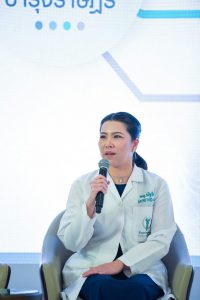
พญ. ณัฐธิดา วงศ์วีระวัฒน์ จักษุแพทย์เฉพาะทางโรคกล้ามเนื้อตาและโรคตาในเด็ก โรงพยาบาลบำรุงราษฎร์ ให้ข้อมูลว่า ปัจจุบันยังมีผู้ปกครองที่ไม่ทราบว่าเด็กแรกเกิดก็อาจเกิดปัญหาเรื่องสายตาได้เช่นกัน โดยเฉพาะกรณีที่คุณแม่คลอดก่อนกำหนด 32 สัปดาห์ หรือน้ำหนักตัวลูก ไม่ถึง 1,500 กรัม เด็กในกลุ่มนี้จะมีความเสี่ยงที่การเจริญเติบโตของเส้นประสาท และเส้นเลือดในจอประสาทตาเกิดเป็นเส้นเลือดที่ผิดปกติ อาจทำให้มีเลือดออกที่จอประสาทตาหรือจอประสาทตาหลุดลอก หรือเป็นพังผืดได้ ซึ่งทางบำรุงราษฎร์ มีทีมแพทย์ชำนาญการในแผนกบำบัดพิเศษทารกแรกเกิด (NICU) หรือ กุมารแพทย์ที่ทำงานใกล้ชิดกับจักษุแพทย์จะมีการมอนิเตอร์และประเมินพัฒนาการในการมองเห็นและความเสี่ยงเหล่านี้อย่างใกล้ชิด เพราะหากไม่ได้รับการดูแลรักษาในช่วงเวลาที่กำหนด ก็มีโอกาสเสี่ยงที่จะสูญเสียการมองเห็นอย่างถาวร
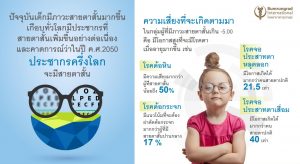
กรณีคุณแม่ฝากครรภ์และคลอดบุตรที่โรงพยาบาลบำรุงราษฎร์ ทางโรงพยาบาลฯ จะมีมาตรฐานการตรวจพัฒนาการด้านการมองเห็นของทารกหากพบปัญหาหรือความเสี่ยงที่อาจเกิดขึ้นได้จะมีการปรึกษาแพทย์ชำนาญการด้านจอตาและจักษุแพทย์โรคตาเด็กแนวทางการรักษาในกรณีทารกมีโรคจอตาผิดปกติอันเกิดจากการคลอดก่อนกำหนดมีหลายวิธี เช่น การรักษาด้วยเลเซอร์ การฉีดยาเข้าไปยับยั้งการเจริญผิดปกติของเส้นเลือดในจอประสาทตา และการผ่าตัดจอประสาทตา นอกจากนี้ เด็กกลุ่มนี้ยังมีความเสี่ยงที่จะสายตาสั้น ตาเข ตาเหล่ตามมาภายหลังได้มากกว่าเด็กที่คลอดตามกำหนด จักษุแพทย์โรคตาเด็กจะรับช่วงดูแลต่อและมีการตรวจติดตามเป็นระยะ ๆ เพื่อป้องกัน ไม่ให้เกิดผลเสียต่อดวงตาของเด็กในระยะยาวหรือบรรเทาความรุนแรงหรือความซับซ้อนของโรคได้
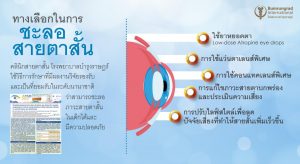
พอเด็กโตขึ้นก็มักจะพบ ‘โรคสายตาสั้นในเด็ก’ ซึ่งมีแนวโน้มเพิ่มสูงขึ้นและเปลี่ยนแปลงเร็วและพบในอายุที่น้อยลง เด็กบางรายสายตาสั้นตั้งแต่ขวบกว่า ส่วนหนึ่งมาจากเด็กที่คลอดก่อนกำหนด และมีเด็กหลายรายที่สายตาทั้งสองข้างสั้นไม่เท่ากันและมีค่าสายตาต่างกันมาก และมีความเสี่ยงโรคสายตาขี้เกียจ ปัจจุบันศูนย์จักษุ โรงพยาบาลบำรุงราษฎร์ มีคลินิกสายตาสั้นในเด็ก ซึ่งมีจักษุแพทย์โรคตาเด็ก ที่จะให้การรักษาและแนะนำการยับยั้งหรือชะลอไม่ให้ค่าสายตาสั้นเพิ่มขึ้นเร็วตามแนวทางการแพทย์สากลในปัจจุบัน เพราะการที่สายตาสั้นไม่ใช่เพียงรอการแก้ไขด้วยเลสิคเท่านั้น แต่สายตาสั้นที่มากขึ้นจะมาพร้อมการเปลี่ยนแปลงภายในตาและความเสี่ยงของโรคตา โดยเฉพาะโรคจอตาที่มากขึ้น ผู้ปกครองจึงควรให้ความสำคัญและพาบุตรหลานมาตรวจเช็คสุขภาพตั้งแต่เนิ่น ๆ เพื่อหาแนวทางการป้องกันและรักษาเพื่อชะลอภาวะสายตาสั้นได้ โดยศูนย์จักษุได้มีการรักษาและการป้องกันโดยอ้างอิงจากงานวิจัยสากลเรื่องสายตาสั้นที่มีทั่วโลกในขณะนี้ เช่น การรักษาด้วยยา low- dose atropine eyedrops และเลนส์แว่นตาเทคโนโลยีใหม่ที่ช่วยชะลอสายตาสั้นในเด็ก โดยจักษุแพทย์ตาเด็กจะเป็นผู้ตรวจ ให้ข้อมูลแนะนำในแต่ละรายซึ่งมีความแตกต่างกันไป นอกจากนี้ โรงพยาบาลฯ ได้มีงานวิจัยต่อยอดที่ได้รับการยอมรับจากสากลเกี่ยวกับการการพัฒนายาหยอดตาในกลุ่มนี้ เพื่อให้คนไข้ได้รับประสิทธิภาพและความปลอดภัยสูงสุด
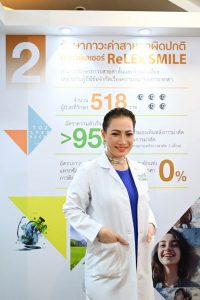
ด้านของ พญ. ฐาริณี กุลกำม์ธร จักษุแพทย์เฉพาะทางด้านการผ่าตัดแก้ไขสายตาด้วยเลเซอร์ โรงพยาบาลบำรุงราษฎร์ ให้ข้อมูลว่า ทุกวันนี้มีคนไข้หลายรายที่มาด้วยปัญหาสายตาสั้นและสายตาเอียง และต้องการแก้ไขด้วยรีเล็กสมายส์ (ReLEx SMILE) ซึ่งคนไข้มักจะคิดว่ามาตรวจแล้วสามารถรักษาได้ในวันเดียวกัน แต่อันที่จริงการรักษามีความละเอียดอ่อนมากกว่านั้น แพทย์ต้องประเมินอาการหรือสาเหตุของปัญหาที่อาจเกิดร่วมกันได้ บางรายมีความซับซ้อนมาก แพทย์ต้องประสานและปรึกษาร่วมกับแพทย์สาขาที่เกี่ยวข้อง แล้วจึงค่อยทำ ReLEx SMILE เพื่อการรักษาที่มีประสิทธิภาพสูงสุด โดยคำนึงถึงความปลอดภัยของคนไข้เป็นสิ่งสำคัญ
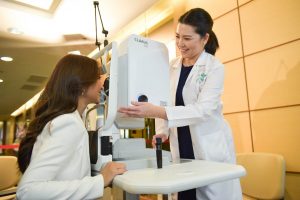
ยกตัวอย่าง คนไข้มาด้วยอาการปวดศีรษะแบบไมเกรนมาเป็นเวลานานมาก ตรวจพบค่าสายตาสั้นและเอียง 1 ข้าง สายตายาวและเอียงอีก 1 ข้าง ซึ่งค่าแตกต่างกันมาก และพบตาเหล่อีกเล็กน้อย รายนี้ต้องปรึกษาร่วมกับแพทย์เฉพาะทางด้านกล้ามเนื้อตา เพื่อยืนยันมุมตาที่เหล่ร่วมกับการคำนวณค่าสายตาในการยิงค่าเลเซอร์ให้ได้ผลดีที่สุดสำหรับคนไข้ทั้งด้านการมองเห็น และไม่เกิดการกระตุ้นให้ตาเหล่เพิ่มขึ้น ขณะที่ผู้ป่วยอีกรายอยู่ในขั้นตอนการทำเด็กหลอดแก้ว (IVF) ซึ่งคนไข้ต้องการทำ ReLEx SMILE ก่อนฝังตัวอ่อน คืออยากแก้ไขปัญหาสายตาสั้นก่อนที่จะมีบุตร จึงปรึกษาร่วมกับแพทย์เฉพาะทางด้าน IVF ถึงกระบวนการรักษา IVF ของคนไข้ เพื่อตอบโจทย์ความต้องการของคนไข้ที่อยากมองเห็นลูกน้อยได้อย่างชัดเจนในช่วงเวลาสำคัญที่เป็นความสุขของครอบครัว ขณะเดียวกันก็คำนึงถึงความปลอดภัยและประสิทธิภาพการรักษาสูงสุด และได้ผลสรุปว่าสามารถทำ ReLEx SMILE ได้ก่อน เพราะขั้นตอนยังไม่ได้กระทบต่อการทำ IVF แล้วจากนั้นอีก 1 เดือนค่อยเก็บไข่คนไข้ และเข้าสู่กระบวนการทำ IVF ต่อไป
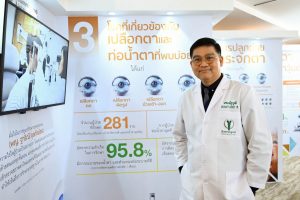
นพ. ณัฐวุฒิ วะน้ำค้าง จักษุแพทย์เฉพาะทางด้านศัลยกรรมตกแต่งและเสริมสร้าง ด้านเปลือกตา ท่อน้ำตา และเบ้าตา โรงพยาบาลบำรุงราษฎร์ กล่าวเสริมว่า ศูนย์จักษุยังให้บริการครอบคลุมในด้านศัลยกรรมตกแต่งและเสริมสร้างด้วย โดยแพทย์จะดูแลรักษาผู้ป่วยเกี่ยวกับโรคเบ้าตาและศัลยกรรมตกแต่งรอบดวงตา อาทิ ไทรอยด์ขึ้นตา ตาโปน ท่อน้ำตาอุดตัน หนังตาตก หนังตาม้วนเข้าใน/ม้วนออกนอก รวมถึงอุบัติเหตุทางตา เป็นต้น
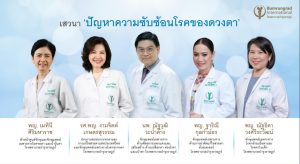
ที่ผ่านมา มีผู้ป่วยหลายรายที่ประสบอุบัติเหตุและกระทบต่อเบ้าตาอย่างรุนแรง ซึ่งต้องอาศัยความร่วมมือกับทีมแพทย์สาขาอื่น ๆ ทั้งภายในศูนย์จักษุเอง รวมถึงแพทย์เฉพาะทางในแผนกอื่นๆ ยกตัวอย่างหญิงชาวยูเครนได้รับอุบัติเหตุจากมอเตอร์ไซค์พลิกคว่ำ หน้ากระแทกค่อนข้างรุนแรง จนใบหน้าหักทั้งหน้า ผู้ป่วยรายนี้ถือว่ามีความซับซ้อนและเป็นอีกรายที่ยาก ต้องมีการปรึกษาแพทย์ที่มีความชำนาญการสูงในหลายแขนง ทั้งจักษุแพทย์เฉพาะทางกล้ามเนื้อตา แพทย์ศัลยกรรมตกแต่งทางตา แพทย์ศัลยกรรมพลาสติก และต้องอาศัยทีมแพทย์ที่มีความชำนาญการและมีประสบการณ์สูงมาก โดยครั้งแรกเข้าผ่าตัดถึง 11 ชั่วโมง และดูแลรักษาต่อเนื่องอีกประมาณ 4-6 เดือน จากนั้นก็เข้ารักษากับจักษุแพทย์เฉพาะทางกล้ามเนื้อตา เพื่อผ่าตัดให้ตาตรง ปัจจุบันคนไข้รายนี้ มีใบหน้าและดวงตากลับมาใกล้เคียงปกติดี ส่วนอีกรายเป็นผู้ป่วยไทรอยด์ในผู้ใหญ่ มีปัญหาตาโปนมากจนตาใกล้จะบอด ทำให้ต้องรับการผ่าตัดแก้ไขเบ้าตา เปลือกตา ซึ่งต้อง consult แพทย์ชำนาญการที่เกี่ยวข้อง อาทิ แพทย์ผู้ชำนาญการด้านต่อมไร้ท่อ, จักษุแพทย์ผู้ชำนาญการถึง 3 ด้าน (กล้ามเนื้อ, เส้นประสาทตา และแก้ไขเบ้าตา เปลือกตา), แพทย์ผู้ชำนาญการด้านรังสีวิทยาเพื่อการฉายแสงและการให้ยาชีววัตถุร่วมด้วย ซึ่งจะช่วยให้ตาที่โปนยุบได้ ซึ่งผู้ป่วยไทรอยด์ส่วนใหญ่จำเป็นต้องได้รับการติดตามอาการอย่างต่อเนื่องตลอดระยะเวลาอย่างน้อย 2 ปี จนกว่าโรคจะสงบ
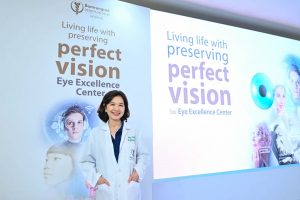
รศ. พญ. งามจิตต์ เกษตรสุวรรณ ประธานชมรมกระจกตาและการแก้ไขสายตาแห่งประเทศไทย และจักษุแพทย์เฉพาะทางโรคกระจกตา โรงพยาบาลบำรุงราษฎร์ ให้ข้อมูลเพิ่มเติมว่าการที่บำรุงราษฎร์สามารถให้บริการปลูกถ่ายกระจกตาได้ ถือเป็นอีกบทพิสูจน์ถึงความพร้อมในทุกมิติของศูนย์จักษุ เพราะก่อนที่คนไข้จะปลูกถ่ายกระจกตาได้นั้น แพทย์ต้องมีการซักประวัติและตรวจสุขภาพผู้ป่วยอย่างละเอียด ตรวจสุขภาพตาเพื่อเตรียมความพร้อมก่อนปลูกถ่ายกระจกตา เช่น ต้องดูว่ามีภาวะต้อหิน ดูประสาทตาและจอตา ความดันลูกตา มีตาแดง มีการติดเชื้อหรือไม่ ต้องเตรียมสภาพผิวตาให้มีความพร้อมที่จะปลูกถ่ายกระจกตา เนื่องจากการอักเสบต่าง ๆ จะกระตุ้นให้เกิดการต่อต้านของเนื้อเยื่อได้ ซึ่งต้องอาศัยการทำงานที่สอดประสานกันของจักษุแพทย์เกือบทุกแขนง และต้องปรึกษาร่วมกันในแต่ละรายว่าสามารถผ่าตัดปลูกถ่ายกระจกตาได้หรือไม่ ที่สำคัญ บำรุงราษฎร์มีการทำงานร่วมกับศูนย์ดวงตาสภากาชาดไทย และศูนย์ดวงตานำเข้าจากต่างประเทศที่ได้การรับรองมาตรฐานขั้นสูง โดยมีการตรวจสอบคุณภาพกระจกตาที่จะนำมาเปลี่ยนให้กับผู้ป่วย มีความใส คุณภาพดี ไม่มีโรคที่อาจเกิดขึ้นกับดวงตาภายหลังการผ่าตัด
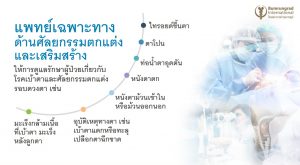
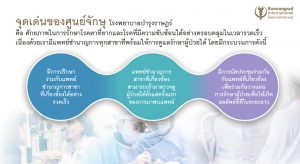
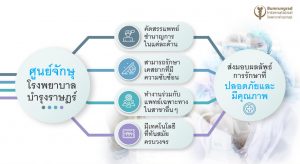
ศูนย์จักษุ โรงพยาบาลบำรุงราษฎร์ สามารถทำการรักษาโรคกระจกตาเสื่อมและต้อกระจกได้ในการผ่าตัดครั้งเดียวกัน ซึ่งผู้ป่วยลักษณะนี้ถ้าทำการรักษาแบบผู้ป่วยต้อกระจกทั่วไป อาจจะทำให้กระจกตาเสียได้ ดังนั้น ก่อนการรักษาแพทย์จะวางแผนร่วมกันและวิเคราะห์ผู้ป่วยแต่ละรายว่าเหมาะสมกับการรักษาพร้อมกันหรือไม่ โดยแพทย์จะอธิบายถึงวิธีการรักษาและให้ผู้ป่วยเป็นผู้ตัดสินใจว่าต้องการรักษาแบบใด ปัจจุบันมีโรงพยาบาลเอกชนเพียงไม่กี่แห่งที่สามารถทำหัตถการได้พร้อมกันถึง 2 โรค ซึ่งต้องอาศัยความชำนาญการและประสบการณ์ของแพทย์อย่างมาก ทั้งนี้แพทย์แต่ละแขนงต้องทำงานร่วมกันได้แบบไร้รอยต่อจริงๆ
พญ. เมทินี ศิริมหาราช หัวหน้าศูนย์จักษุและจักษุแพทย์เฉพาะทางโรคจอตาและน้ำวุ้นตา โรงพยาบาลบำรุงราษฎร์ กล่าวปิดท้ายว่า ทุกวันนี้ ต้องยอมรับว่าแพทย์ไทยเก่งและมีความสามารถมาก แต่สิ่งที่จะทำให้วงการแพทย์พัฒนาก้าวไปไกลมากขึ้น คือ การหยิบเอาความรู้ความชำนาญการของแพทย์แต่ละท่าน รวมถึงจุดแข็งของแพทย์ในแต่ละสาขามาไว้รวมกันและทำงานร่วมกันได้ ซึ่งจะทำให้กระบวนการการรักษาเกิดประสิทธิภาพและผลลัพธ์หลังการรักษาได้อย่างดีที่สุด ส่วนนี้จะช่วยเอื้อประโยชน์สูงสุดให้แก่ผู้ป่วย โดยเฉพาะอย่างยิ่งโรคยาก หรือโรคที่ซับซ้อน โดยสถิติการรักษาในปี 2565 ได้แสดงถึงอัตราความสำเร็จของการผ่าตัดเกี่ยวกับโรคตาโดยเฉลี่ยสูงกว่า 90% ซึ่งสูงกว่าเกณฑ์มาตรฐานในระดับสากล สะท้อนถึงศักยภาพและความพร้อมในทุกมิติของศูนย์จักษุ โรงพยาบาลบำรุงราษฎร์
Bumrungrad leverages our Eye Excellence Center’s service by delivering seamless, fast, safe, holistic medical care of even the most complex disorders.
The eyes are complicated and need special care as there may be underlying health issues. Having opthalmologists in the field of subspecialties and other specialists closely collaborate to provide holistic, seamless care in one hospital is key. The latest medical innovation strengthens our competency. All of these factors allow us to provide safer and more effective care to our patients.
The World Health Organization reports 2.2 billion people globally suffer from vision problems, with 50% of cases being preventable or otherwise treatable conditions. Moreover, in 2020, 1.1 billion permanently lost their sight and over the next 30 years this number is expected to rise by 600 million to 1.7 billion people.
Mrs. Artirat Charukitpipat, Chief Executive Officer of Bumrungrad International Hospital reveals that eye problems have big consequences regarding quality of life and affect our ability to navigate our day-to-day responsibilities. Eye disorders affect people of all ages and genders. Bumrungrad understands the dangers eye conditions pose and hence is hosting the Eye Excellence Center press event to raise awareness regarding proper eyecare and eye disorder prevention. Our eyes are one of our most important and complex sensory organs and so it is important to engage specialists to take proper care of them as we age.
The Bumrungrad Eye Excellence Center is ready to comprehensively treat all eye disorders, from the simplest to most complex cases, and for patients of all ages – including damage due to severe trauma or injury. Our ophthalmic surgeons include cornea specialists, retina specialists, eye muscle specialists, and for complex cases involving co-morbidities, our ophthalmologists will coordinate treatment with the other doctors on the patient treatment team which might represent specialties such as endocrinology & metabolism, neurology, pharmacy, or other fields. All our doctors and medical professionals on staff make use of the most modern tools to aid diagnosis and perform treatment quickly and accurately, all being key factors for increased patient safety and quality of outcome.
Dr. Maytinee Sirimaharaj, director and ophthalmologist specializing in retina and vitreous at Bumrungrad Eye Excellence Center, Bumrungrad International Hospital shares that all parts of the eye work together to help people see clearly. The retina is most important because it determines image quality. When the retina is healthy, light passes through the cornea to the lens. The cornea and the lens help to focus the light onto the retina, producing a sharp image. However, when retinal problems are left untreated, permanent vision loss can occur. When the retina is damaged it cannot be replaced, unlike the cornea. Common retinal problems include retinal detachment, age-related macular degeneration, diabetic retinopathy, retinal dystrophy, which often occurs at birth, or progressive thinning & rupture of the cornea, which results in nearsightedness or vision loss.
Dr. Nuthida Wongwirawat, orthoptist and pediatric ophthalmologist at Bumrungrad International Hospital, states, “Parents today may not know that a new born can have vision problems, especially when the baby is born pre-mature, or weighs less than 1,500 grams. These babies risk having retinopathy of prematurity, an abnormal growth of blood vessels in the retina. The retina may bleed, scar, and pull away from its normal position. At the Bumrungrad NICU, pediatricians work closely with pediatric ophthalmologists to monitor and evaluate infant vision development and the risks of developing eye problems. If such problems are not treated in a timely manner, it may cause permanent vision loss and blindness.
In the case of antenatal and childbirth mothers at Bumrungrad International Hospital, we provide the internationally standard infant vision development test. If the infant is at risk of retinopathy of prematurity or other vision problems are detected, retina specialists and pediatric ophthalmologists will work together to devise an appropriate treatment plan. Potential treatment options include laser treatment, intravitreal drug injection, and vitrectomy. Such infants are at greater risk of nearsightedness or strabismus than full term babies. Our pediatric ophthalmologists will provide follow-up care based on the treatment plan and perform tests to ensure the eyes stay healthy in the long run and to lessen the complications and severity of retinopathy of prematurity.
Currently, childhood myopia is common and growing. The conditions under which children develop myopia have become unpredictable and it is now found at younger ages. Some children become nearsighted when they are only a year old. One reason for this is premature birth. Some children have uneven vision or even develop anisometropia or are at risk of having amblyopia. At present, the Bumrungrad Eye Excellence Center has a specialized pediatric eye clinic. Pediatric ophthalmologists provide treatment and advice on how to prevent or slow myopia based on the latest medical knowledge. People who have myopia cannot just wait for LASIK eye surgery because myopia causes changes in the eyes and increases the risks of retinal disease. Parents and caretakers should prioritize pediatric eye health and bring children to have their eyes tested at an early age to prevent, treat, or slow myopia. The Bumrungrad Eye Excellence Center specializes in preventing and treating vision problems based on the existing research on myopia. For example, we provide low-dose atropine treatment, given as eye drops, and bifocal spectacle lenses. Pediatric ophthalmologists perform screenings and treatment advice for each individual case. Bumrungrad also conducts on-going international research to further develop atropine treatment protocols to provide the most effective treatment to our patients.
Dr. Tharinee Kulkamthorn, ophthalmologist specializing in vision correction, and refractive surgery at Bumrungrad International Hospital reveals, “A lot of patients come to Bumrungrad for the ReLEx SMILE to correct nearsightedness and astigmatism. They usually think the treatment takes one day. Actually, ReLEx SMILE involves a delicate process. Doctors need to evaluate co-morbid and pre-existing conditions and the root causes of the problem. Some cases are so complicated doctors need to consult teams of experts before performing ReLEx SMILE to deliver the best treatment outcomes while prioritizing patient safety.
For example, a patient came to Bumrungrad presenting with a long history of migraines. That patient turned out to suffer nearsightedness and astigmatism in one eye and farsightedness and astigmatism in the other. His vision was dramatically uneven. He had a slight case of strabismus too. Ophthalmologists and orthoptists worked together to calculate the angle of strabismus and the eye so the laser treatment would be successful. The goal was to enable the patient to see clearly without worsening the strabismus.
Another patient was going through an IVF cycle and wanted to have ReLEx SMILE to correct nearsightedness before having the embryos transferred to the uterus. Ophthalmologists consulted with reproductive endocrinologists regarding the IVF process so the ReLEx SMILE procedure could safely be performed. We also supported the patient’s wish to be able to see their baby clearly at birth. We understood it would be a happy moment and an important milestone for our patient, so we worked hard to maintain our standards of safety and achieve the best outcome possible. We performed ReLEx SMILE first because it did not conflict with IVF. After a month-long pause, we collected the patient’s eggs and continued on with the IVF process.
Dr. Nattawut Wanumkarng, ophthalmologist specializing in oculoplastic and reconstructive surgery at Bumrungrad International Hospital, adds, “The Bumrungrad Eye Excellence Center performs cosmetic and reconstructive surgery as well. We perform surgery on the eye socket and around the eyes. For example, we provide treatment for thyroid eye disease, exophthalmos, nasolacrimal duct obstruction, ptosis, and entropion & ectropion. We treat eye injuries caused by accidents, too.
We have treated patients who have had accidents which severely injured the eye socket. Our ophthalmologists at the Bumrungrad Eye Excellence Center collaborated with specialists to deliver the most effective treatment. For example, a Ukrainian woman had a motorcycle accident resulting severe facial fractures. The case was complex and needed the expertise of several specialists. Orthoptists, ophthalmic surgeons, and teams of experienced specialists worked closely together to coordinate treatment. It took 11 hours to perform the surgery and 3-6 months of follow-up care. After the injuries healed, orthoptists performed another operation to correct her eye movement. Now, the patient has made close to a full recovery – her face has healed and her vision is back to almost normal. Another patient suffered from thyroid eye disease. He had a severe case of exophthalmos and was almost blind. Ophthalmologists at Bumrungrad collaborated with endocrinologists, orthoptists, neuro-ophthalmologists, and surgeons to operate on the bulging eyes. Radiologists performed radiation therapy. Also, biological products were prescribed to help treat the condition. Thyroid patients need at least 2 years of follow-up care until the condition improves.
Assoc. Prof. Dr. Ngamjit Kasetsuwan, President of Cornea and Refractive Society of Thailand, and a cornea specialist at Bumrungrad International Hospital, adds, “Bumrungrad performs corneal transplantation, which shows our competence in providing holistic, comprehensive eyecare. Prior to corneal transplant surgery, ophthalmologists carefully go over the patient’s medical records and perform a thorough checkup and eye test to ensure the patient is ready. For example, ophthalmologists need to consider whether the patient has glaucoma. We check the patient’s optic nerve, retina, and intraocular pressure and look for signs of redness or infection as well. Then ophthalmologists prepare the surface of the eyes for the corneal transplant procedure. Inflammation triggers rejection of the transplanted cornea, all eye specialists need to work together to evaluate each case. Importantly, Bumrungrad collaborates with the Thai Red Cross Eye Bank and high-standard international eye banks to provide donor corneas. We ensure clear, good quality, disease-free corneas for our patients so any eye diseases are not likely to occur after corneal transplantation.
The Bumrungrad Eye Excellence Center can treat corneal dystrophy and cataracts during the same operation. If treated like a general cataract treatment, the patient’s cornea may be damaged. Before the treatment, ophthalmologists plan together and conduct an analysis to see if the patient’s condition is suitable for treatment of both conditions at once. Ophthalmologists use a patient-centered process to help patients decide which treatment option they would like to choose. At present, few private hospitals in Thailand treat corneal dystrophy and cataracts simultaneously. It requires expertise and experienced ophthalmologists and specialists who can work together seamlessly, which is our strength at Bumrungrad.
Dr. Maytinee Sirimaharaj, director and ophthalmologist specializing in retina and vitreous at Bumrungrad International Hospital, concludes, “Thai doctors are smart and skillful. The way to move forward is to leverage the expertise and strength of each specialist as they work together, resulting in the best treatment and post-treatment outcomes. This benefits patients significantly, especially those who suffer from rare or complex conditions. In 2022, our success rate for eye surgeries was over 90%, higher than called for by international standards. This reflects the Bumrungrad Eye Excellence Center’s competency and readiness in providing holistic, comprehensive eyecare.”



